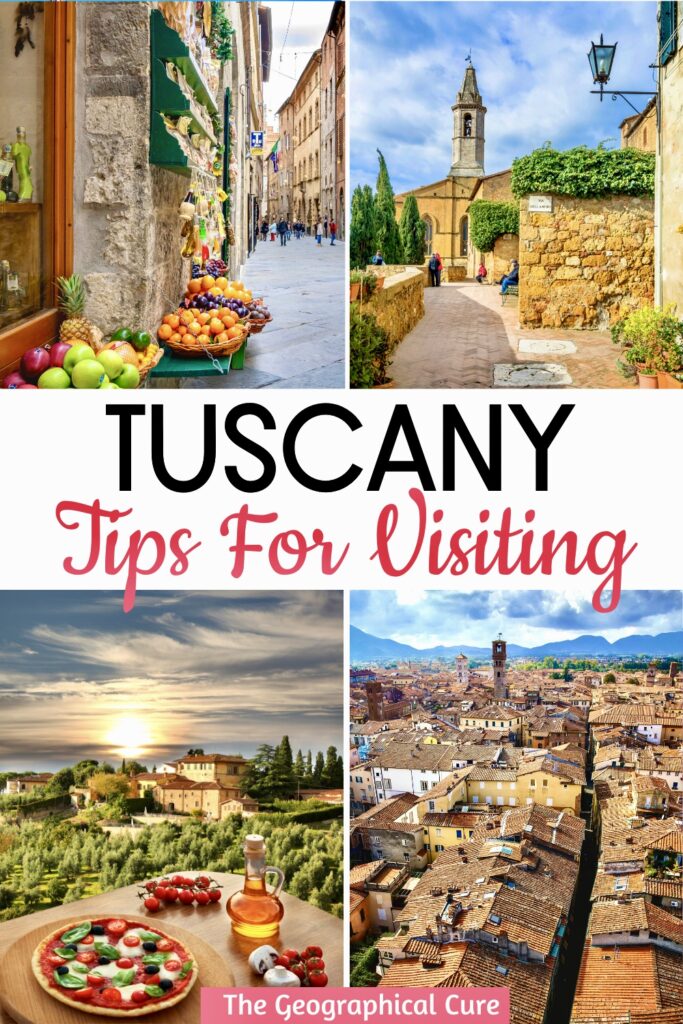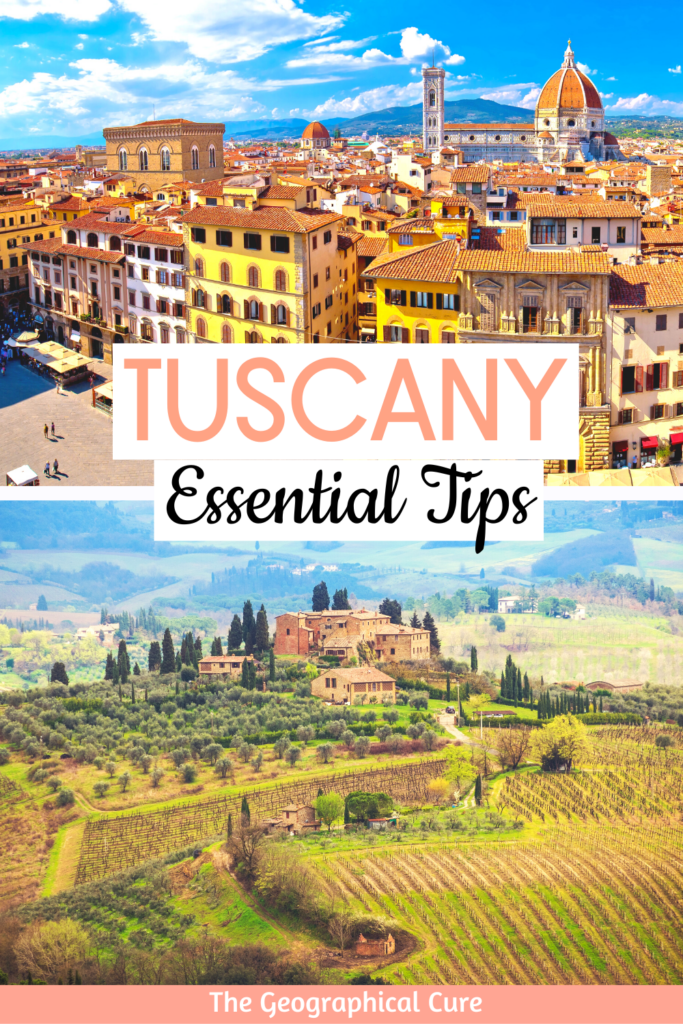Ah, Tuscany! This picturesque region of Italy is a tapestry of olive groves, vine-clad hills, and time-worn medieval towns, each with its own story to tell.
As a travel expert who’s wandered these rolling landscapes and savored the region’s rich cultural experiences, I’m here to share with you my top tips for visiting Tuscany.
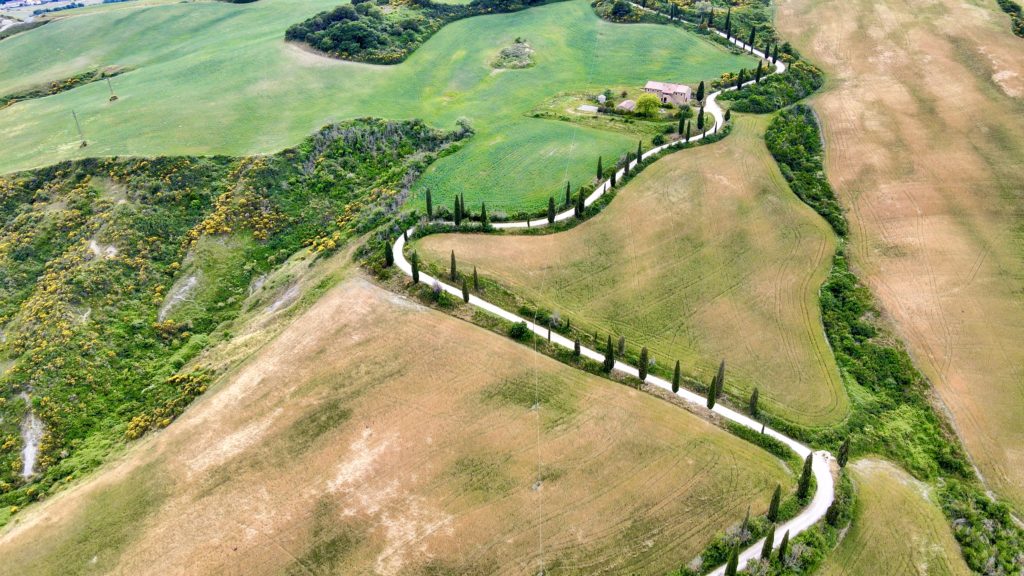
Key Tips For Visiting Tuscany
1. How To Get To Tuscany
Most people fly into the Amerigo Vespucci Airport in Florence. You can get there from many major cities in Europe.
You can also reach Florence via the airports in Rome or Milan, proceeding on to Florence via high speed train. Rome is the most convenient hub.
From Florence’s airport, take a taxi to your hotel or book a private transfer. The ride is about 15 minutes.
From the train station, you can catch a taxi, book a private transfer, or simply walk into town.

2. Where To Stay In Tuscany
This is a big topic. I’ve done different things when staying in Tuscany — hotels, villas, Air Bnbs.
If you’re a city person, you could consider staying in Florence for your one week in Tuscany.
Trains and guided tours leave daily from Florence. So you could alternate spending time in Florence with taking day trips from Florence.
But Florence is a pretty busy place. You may prefer some peace and quiet.
If so, then consider renting a villa in the countryside for one week in Tuscany and using that as your base. This is probably my favorite option.
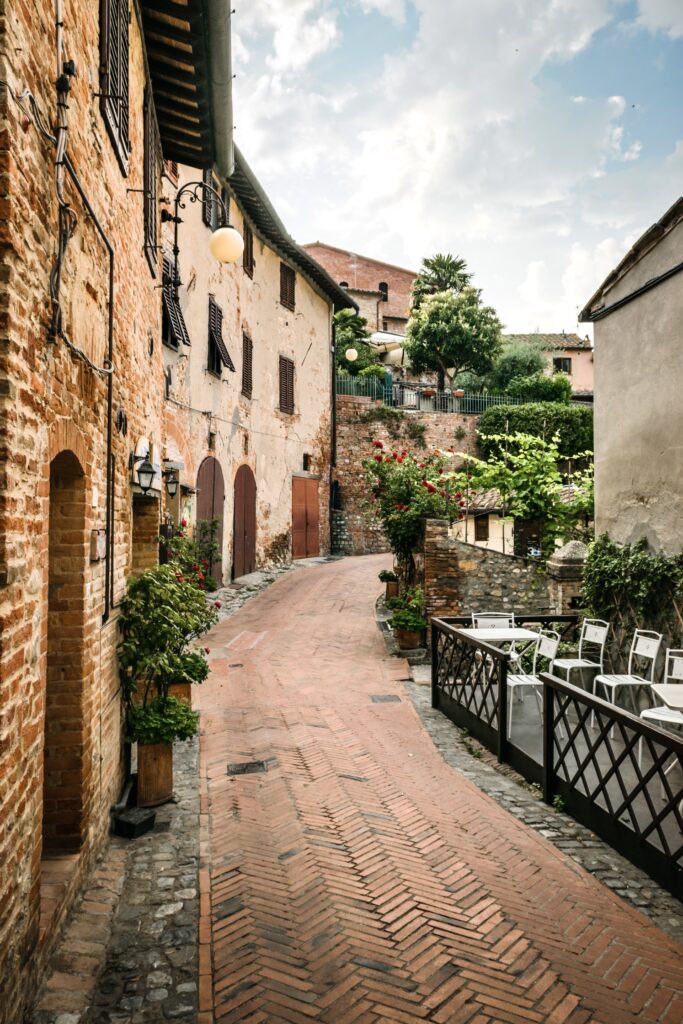
You will have to do some driving to get to your day trip destinations. But it’s worth it to come home every night to your own place and not have to move around. Plus, you won’t have to eat out every meal.
If you want to rent a villa, I would recommend somewhere in central Tuscany. You may want to stay near San Gimignano, Arezzo, or somewhere in the Chianti region between Florence and Siena. These are all centrally located for sightseeing.
Another option is to pick a couple different hotels/places as your base. You could split your time between Florence and one of the places I mentioned above. Or, you could divvy up between northern Tuscany and southern Tuscany.
In northern Tuscany, stay in the Chianti region or Siena. In southern Tuscany, both Montepulciano and Pienza make good bases.
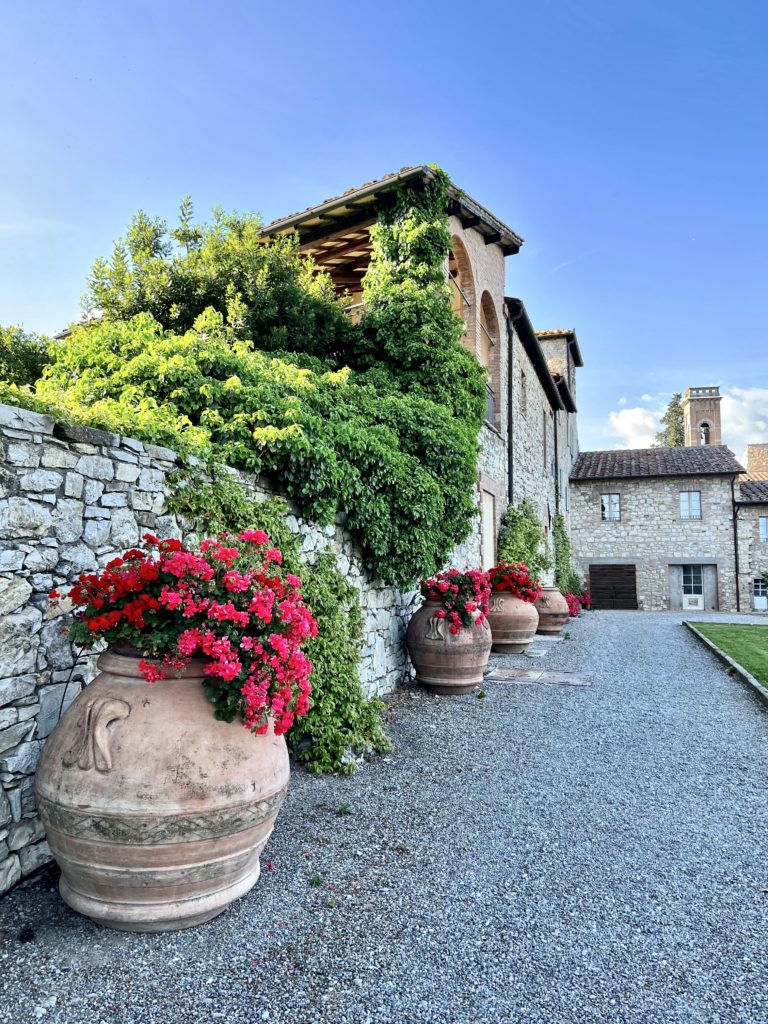
Here are some of my personal favorite hotels in Tuscany:
Borgo San Felici (outside Siena): It’s essentially a medieval stone village that’s been transformed into a luxury hotel.
Hotel Brunelleschi (Florence): It’s a very central hotel, stylishly converted from an ancient 5th century tower.
Portrait Firenze (Florence): This is a luxury boutique hotel that’s part of the Lungarno Collection owned by the Ferragamo family.
Villa Cora (Oltrarno neighborhood of Florence): This is a luxe hotel in the grand old style famed for its 19th century architecture, luxurious amenities, and picturesque gardens.
Castello del Nero (Chianti region): This gorge hotel is a renovated 12th century castle and has a real “wow” factor and panoramic terrace.
Lupaia: (between Montepulciano and Pienza): Lupaia is a boutique luxury hotel set within a beautifully restored Tuscan farmhouse and surrounding buildings.
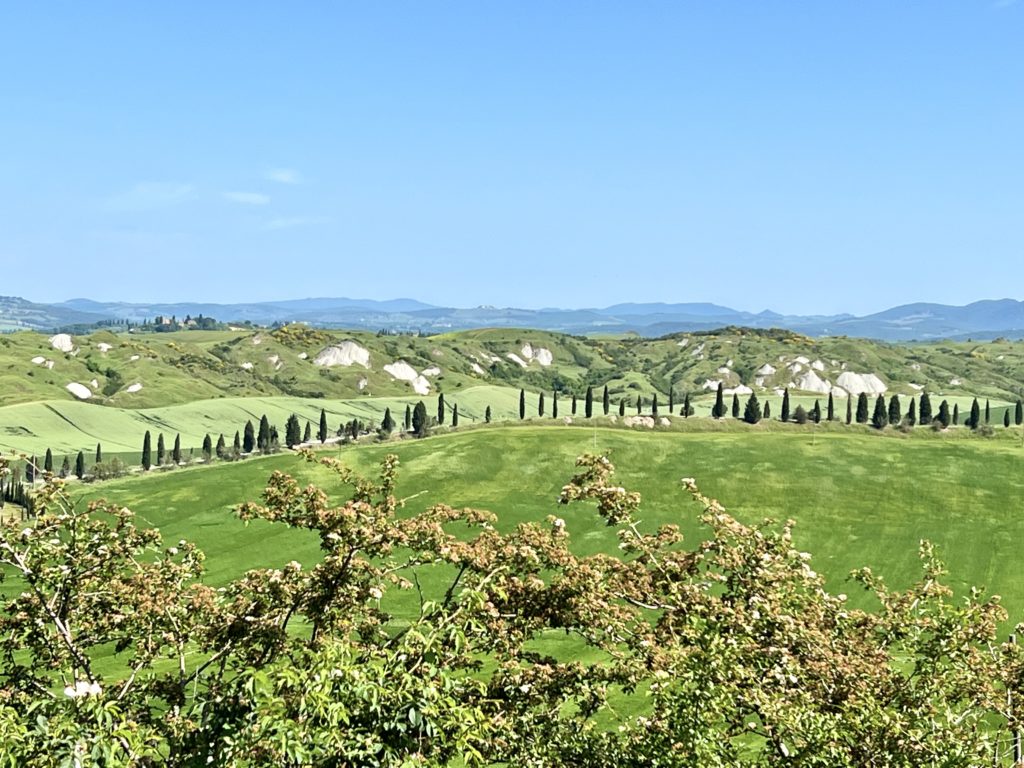
3. How To Get Around Tuscany
You’ll definitely need some tips for getting around Tuscany.
I find it easiest to drive around Tuscany. The scenery is gorgeous. Driving through the undulating hills, vineyards, and olive groves is incredibly enjoyable.
Driving also gives you more flexibility for your one week in Tuscany itinerary.
For example, on the spur of the moment you may add on another town on a day trip. Or, spend the day in one place and have dinner in another. You can also stop for photos on a whim.
But if you want to avoid renting a car, then the region’s excellent rail system serves many key centers — Florence, Pisa, Lucca, Cortona, Arezzo
Not all hill towns have train stations, like Montepulciano and Pienza for example. But you can get there with a combination of trains and buses.
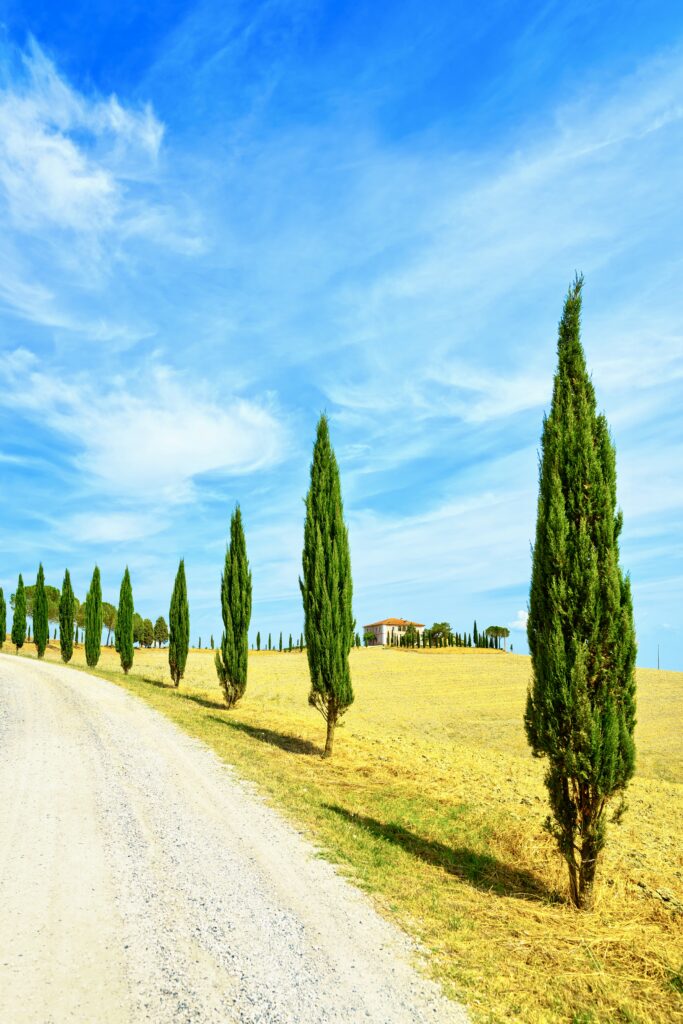
If you are not staying overnight in Florence, it’s a good idea to take the train to the city to avoid the hassle of parking.
In Tuscany, you’ll typically be taking a regional train. They are slower than high-speed trains, but are essential for reaching smaller towns and rural areas.
For regional trains, you’ll need to validate your ticket before boarding. Ticket validation machines are usually located on train platforms.
This process timestamps the ticket, marking it as used. Failure to validate a regional train ticket can result in a fine.
Train tickets can be purchased at train stations, online, or through various apps. I usually use Trenitalia. Be aware that platform changes can occur abruptly.

4. Driving In Tuscany
Driving in Tuscany is fairly easy (outside Florence). Try to get a compact car. The roads are narrow and parking places can be tight to get into.
The roads in Tuscany are fairly well paved. There are some toll roads, called the autostrade. But most aren’t.
You may want to get a telepass from your rental car agency to help you speed through the tolls. Otherwise, when entering the toll area to pick up your ticket, head to the lane marked “biglietto.”
You then pay at an exit booth. There are separate lanes for paying with cash and credit cards. The booths won’t be manned.
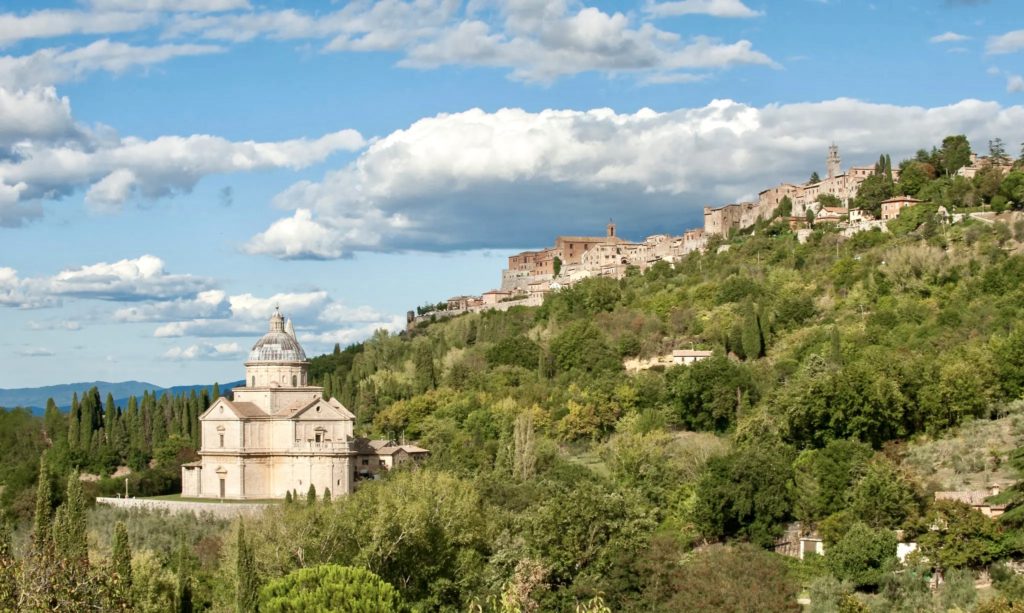
If you’ve driven in Europe before, you’ll know to expect lots of roundabouts. If you have a GPS with voice directions, they’re pretty easy to navigate. It’s also helpful to have a co-pilot.
You won’t want to drive into the centro storico any of the hilltop villages you visit. In many cases, you can’t drive into these restricted ZTL zones without a special permit anyway.
I usually research parking places/lots in advance. But there are usually well marked lots outside the historic center of most towns.
Most lots are “pay and display.” You get a ticket for X amount of time and display it in your car window.
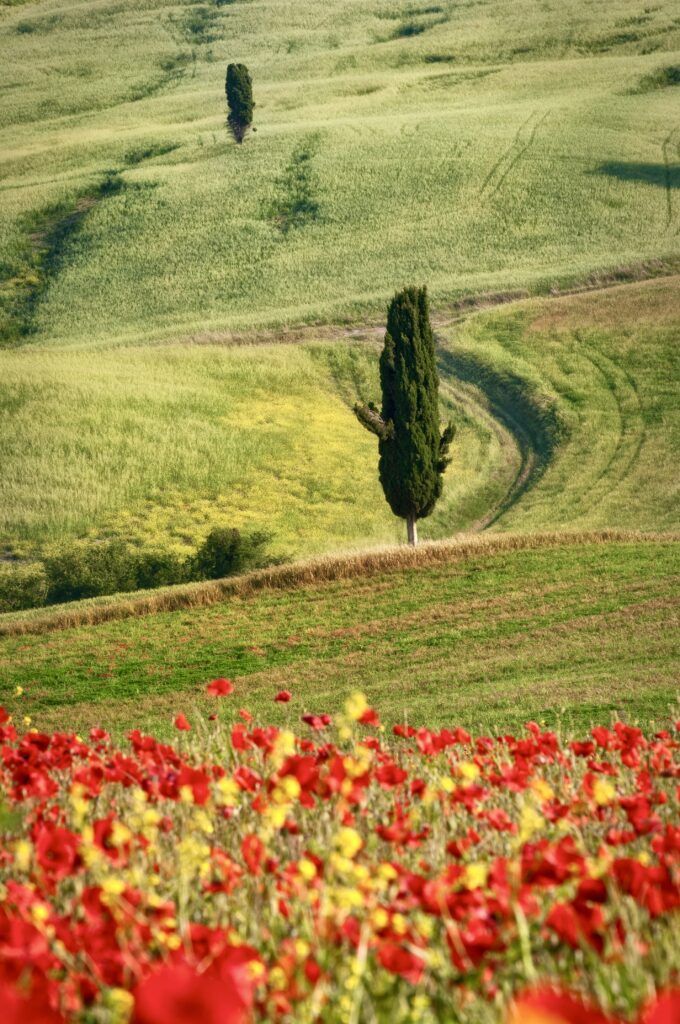
The Italians drive pretty fast. But you don’t have to. Plus, there are speed cameras everywhere.
After you’ve explored Tuscany and it’s time to move on, you have a couple of options for your rental car. You can either return it in Florence or keep it until you reach your next destination.
Generally, Italy’s cities are easily navigable with public transport, thanks to an efficient, affordable, and eco-friendly railway network.
However, if your travel plans include regions like the Dolomites or Puglia, where public transport access is limited, it might be a good idea to keep your rental car for that leg of the journey.
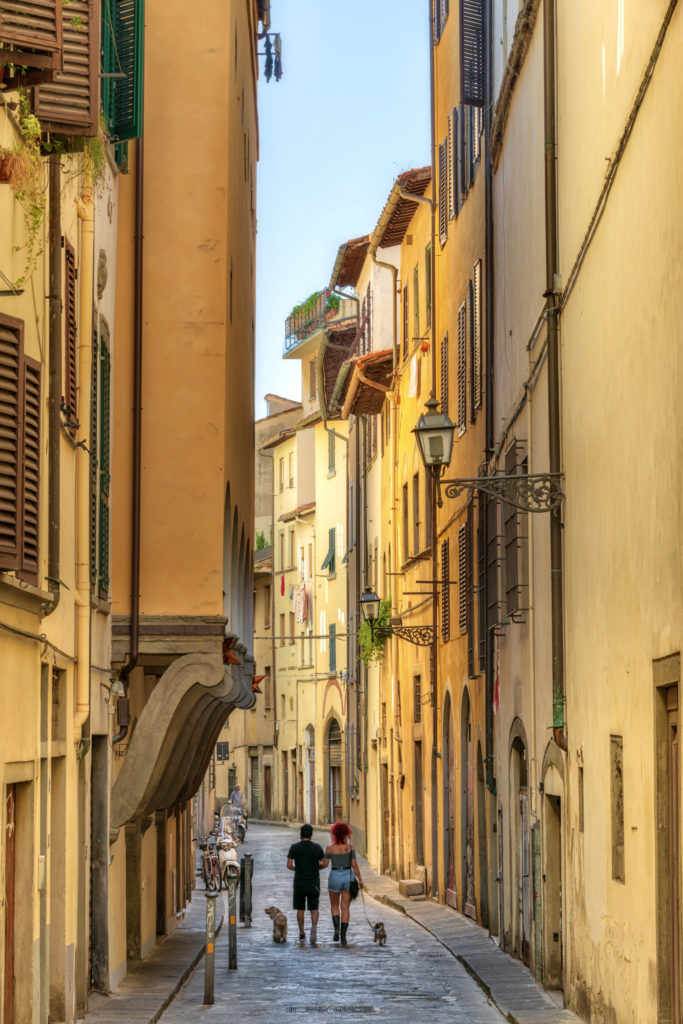
5. Best Time To Visit Tuscany
Weather wise, the best time to visit Tuscany is either late April to early June or Mid September to the end of October.
Fall is when the grape and olive harvest happen, and truffles are in season. On the other hand, the landscapes will have been burned brown by the summer sun.
July and August are too hot and crowded to explore comfortably. Beach resorts are also the busiest during these months.
Florence is busy year round. The quiets period are November (when it’s rainy) and February (when it’s cold but clear).
In addition, in the off season (winter), it’s possible some attractions will be closed or have shorter hours.
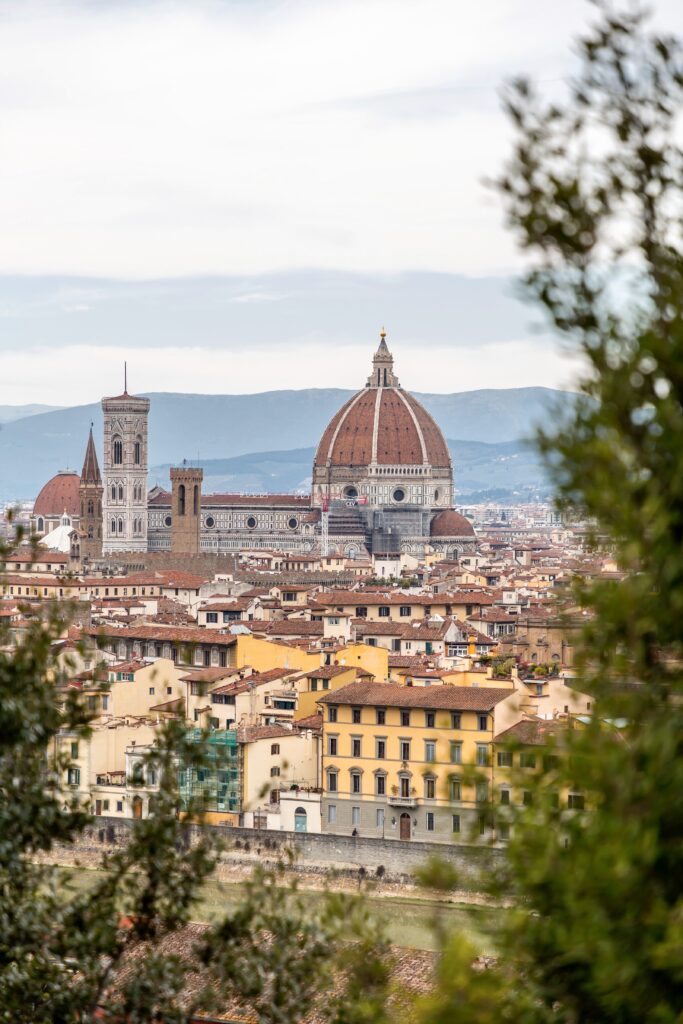
6. Logistics
Another tip for visiting Tuscany is that most stores, banks, churches, and visitor centers close for lunch, typically from 1:00 pm to 3:00 pm. All day openings are more common in Florence and Siena.
In Tuscany, like in much of Italy, restaurant hours can vary, but there is a common dining pattern that many establishments follow.
Typically, restaurants open for lunch around 12:00 pm to 1:00 pm and then close in the afternoon. They usually reopen for dinner between 7:00 pm and 8:00 pm.
However, in tourist-heavy areas and larger cities like Florence, Siena, or Pisa, you’re more likely to find restaurants that remain open throughout the day to cater to tourists.
Tipping is different than in the US. Round up the bill or leave 10% at most. Sometimes service is included in the check.
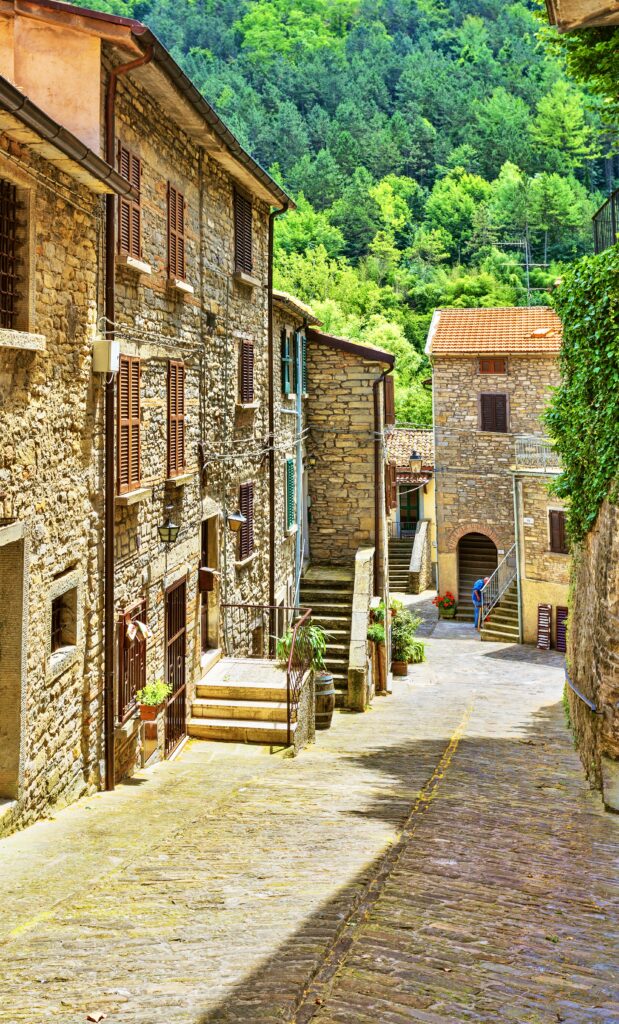
Public bathrooms are extremely scarce. You’ll need to rely on museums or stop into a cafe or bar to order a drink.
Dress the part. Summers can be hot and winters cold. Wear comfortable shoes for walking, especially in hill towns with cobblestone streets.
7. Etiquette
Florentines tend to dress well and somewhat conservatively. The dress code for dinner is smart casual.
When visiting churches, cover your arms, shoulders, and knees. Do not visit during church services.
When greeting someone, do not use the informal greeting ciao. You should say salve or buon giorno. Always say thank you, grazie. It’s pronounced gratz-e-ay.
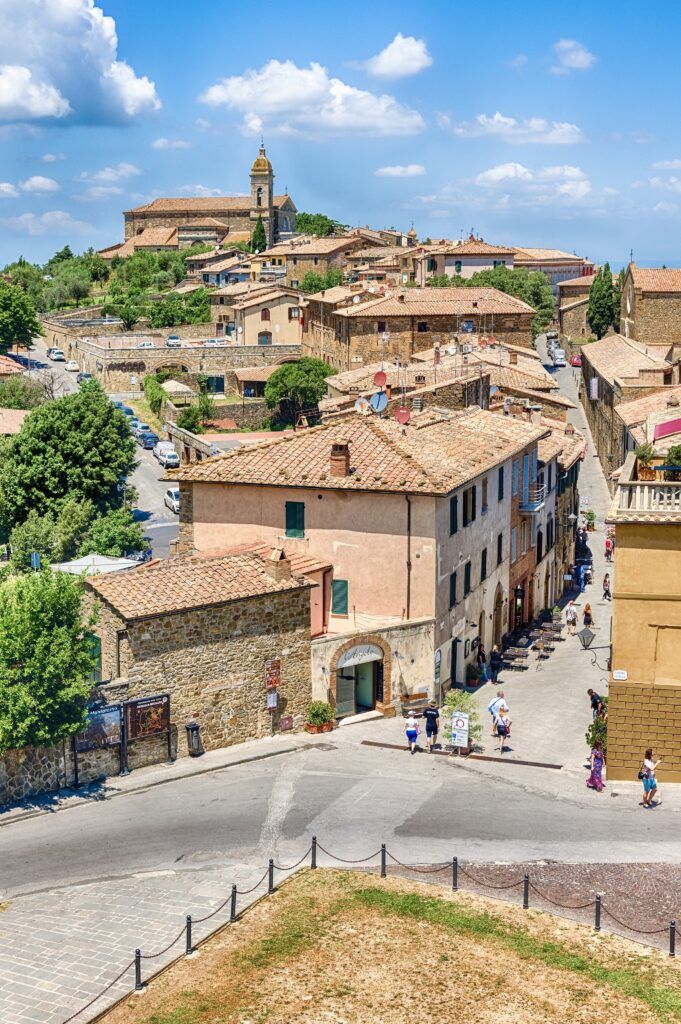
8. Sample Itineraries
I’ve been to Tuscany several times and have a 7 day Tuscany itinerary and a 10 day Tuscany itinerary on my blog.
With 7 days, you could do this:
- Day 1: Florence
- Day 2: Lucca & Pisa
- Day 3: San Gimignano + Volterra
- Day 4: Val d’Orcia: Montepulciano + Pienza
- Day 5: Siena
- Day 6: Monteriggioni + Cortona
- Day 7: Arezzo (or another day in Florence at the beginning)
With 10 days, you could try this:
- Day 1: Arrive in Florence
- Day 2: Explore Florence
- Day 3: Explore Florence
- Day 4: Day Trip to Arrezo or Cortona
- Day 5: Pick up your car, drive to and explore Siena
- Day 6: Drive to Montepulicano, stop in Pienza
- Day 7: Drive to San Gimignano, overnight in Volterra
- Day 8: Explore Volterra and Drive to Lucca
- Day 9: Explore Lucca
- Day 10: Day Trip To Pisa
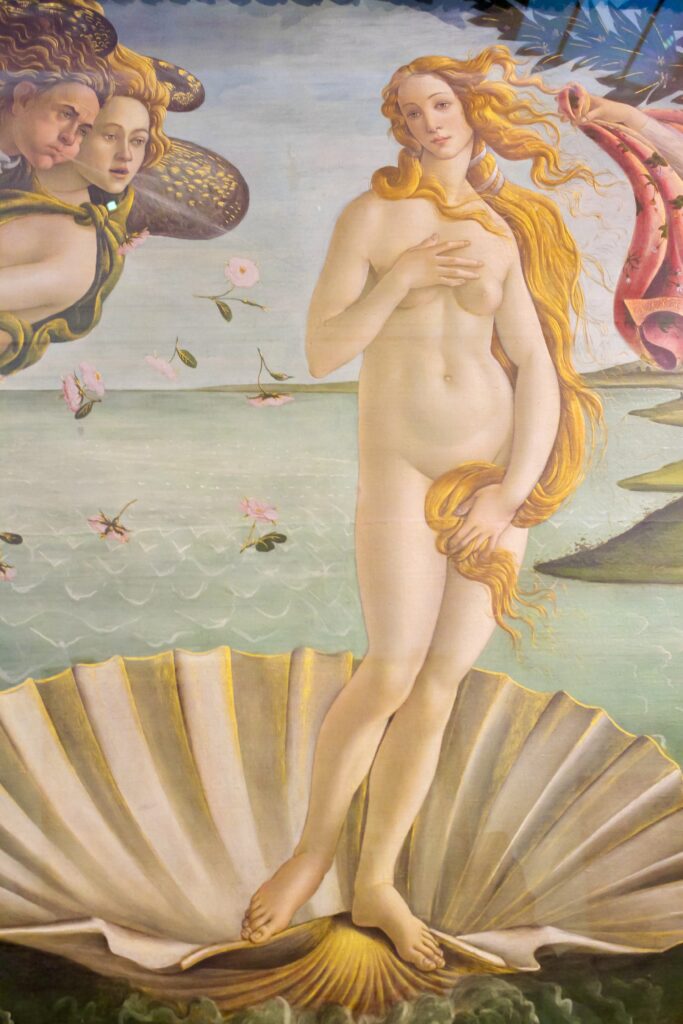
9. What Do You Need To Pre-Book?
So what tickets and tours do you need to book in advance?
In Florence, you should book tickets for all the top sites — Uffizi Gallery, the Accademia Gallery, the Medici Chapels, and Brunelleschi’s dome. Otherwise, you may face hour long lines or be turned away.
You may also want to pre-book a guided walking tour or guided food tour. These tend to sell out fast, especially in high season.
In almost any season, you’ll need to make restaurant reservations in advance to get a table.
There are other places in Tuscany where pre-booking can be beneficial.
Pisa: For the Leaning Tower of Pisa, it’s advisable to book tickets in advance, particularly if you want to climb the tower. The number of visitors allowed inside at any given time is limited for safety reasons.
Siena: If you’re planning to visit the art-filled Siena Cathedral, you’ll need to book the Opa Si Pass to avoid a wait. If you want to visit Siena to attend the Palio, you need to book hotels and seats many many months in advance.
Wine Tours: Tuscany is famous for its wine, and many popular vineyards offer wine tours and tastings. Booking these in advance ensures you get the date and time that suits you best, as they can fill up quickly.
Day Trips: If you plan to take any guided day trips from Florence to idyllic Tuscan towns, those fill up quickly too. I recommend booking these day tours in advance:
I hope you’ve enjoyed my tips for visiting Tuscany. You may find these other Tuscany travel guides useful:
- 1 day in Florence itinerary
- 2 days in Florence itinerary
- 3 days in Florence itinerary
- Best things to do In San Gimignano
- Best things to do in Montepulciano
- Best Things to do in Pienza
- 2 days in Siena itinerary
- 1 day in Siena itinerary
- 1 day in Arezzo itinerary
- 1 day in Cortona itinerary
- 1 day in Volterra itinerary
Pin it for later.

